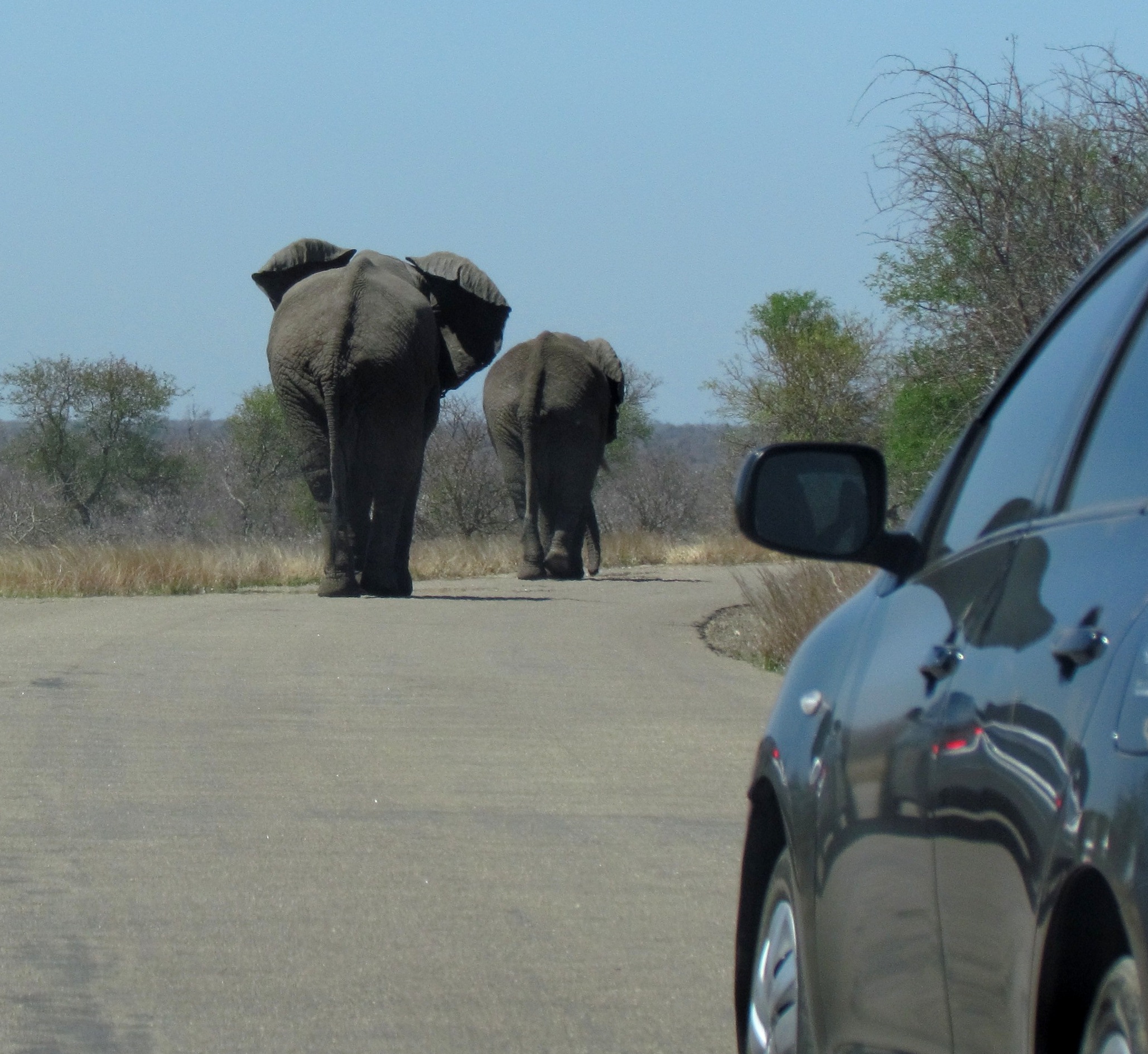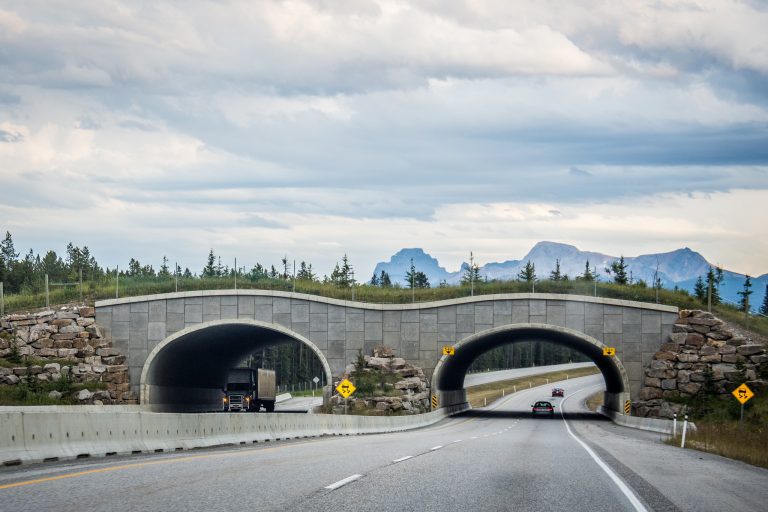- In a given year, an estimated one to two million wildlife-vehicle collisions occurs in the United States alone.
- A meta-analysis comparing data on the effectiveness of road-kill mitigation efforts found that fencing yields the best results.
- Although the most effective road-kill reduction measures can be the most costly, the study emphasizes that they have high returns on investment.
The United States alone has over four million miles of roadways, according to the Federal Highway Administration (FHA). Wildlife is threatened along every mile of this road network, as well as roads around the world, but policy makers and researchers are working on prevention methods to lessen the number of wildlife-vehicle collisions (WVCs).
In a study published in November 2016, Dr. Trina Rytwinski and a multi-institutional team of researchers analyzed data from 50 studies in North America, Europe and Oceania on the effectiveness of road mitigation efforts. Forty-one studies were conducted in North America.
A 2008 FHA study reported that the United States crash database records contain about 300,000 WVCs. However, the study estimates that the real number of collisions is between one and two million, as many go unreported.

WVCs can have consequences for both the motorist and the animal. Impacts on people include vehicle damage, emotional distress, and travel delays. Although injuries and fatalities caused by WVCs are rare, they do occasionally occur when the vehicle strikes larger animals.
Animals are more often faced with death when WVCs occur, and deaths can seriously impact wildlife populations. The FHA reported that road mortality is one of the major threats to 21 threatened or endangered species in the U.S.
Comparing wildlife-vehicle collision prevention methods
The analysis compared the relative effectiveness of different strategies in reducing WVCs, as well as the effectiveness of the various methods in protecting particular taxa.
Avoiding WVCs entails strategic approaches in influencing both the motorist’s behavior and the animal’s behavior along the roads, and the current study analyzed the effectiveness of both techniques.
The published studies reviewed by the researchers described or implemented over 40 types of WVC mitigation methods. The data collected came mainly from assessments of crossing structures (under- and over-passes), fencing, reflectors and animal detectors.
Roadway structures are set up to reduce wildlife road mortality by either blocking wildlife movements across roads or assisting in them. Technologies such as wildlife reflectors and mirrors, lighting, and the more costly animal detection systems, which include radar detection and laser tripwires, focus on reducing collisions with large mammals.
The analysis also examined if combinations of methods, such as the use of both fencing and crossing structures, are more effective than single methods.
Certain methods, such as motorist warning signs, speed reducers such as speed bumps, reflectors or repellants, might be chosen because they are cheaper to set up and maintain, but they may be ineffective. More expensive measures, including fencing, crossing structures and animal detectors, may more effectively reduce collisions but may be too costly or lack public support.

Despite the efforts of many localities to reduce the WVCs, the effectiveness of their mitigation actions is largely unknown.
According to the study, previous analyses of approaches for WVC avoidance lacked research methods such as baseline data collection, comparisons between areas with the mitigation measure and control sites, and comparisons of different areas using the same methods.
The lack of knowledge of the most suitable mitigation strategies for particular situations or taxa makes it difficult to determine which would best suit an area’s individual purposes.
Results
Analysis from the 50 studies revealed that areas using at least one mitigation method experienced 40 percent fewer WVC incidents than control sites where no methods were used.
The researchers found that, between target and control areas, fencing alone reduced road-kill by 86 percent.
However, when fencing was combined with the crossing structures, they found that the road-kill rates reduced by a much lower 51 percent. In contrast this combination showed a far greater reduction in wildlife mortality than crossing structures alone, which surprisingly showed a 23 percent increase in roadkill.
“One could argue that crossing structures without fencing are not intended to reduce road-kill in any case, but rather to increase movement of animals across roads,” the study said. “However, the fact that some researchers measure road mortality before and after the installation of a crossing structure without fencing means that reduced road-kill was at least part of the objective for the structure.”

Although these results could be skewed by differences among the contributing studies, they could also indicate that adding fencing to crossing structures would improve reduction rates and that there is no added road mortality benefit in adding crossing structures when fencing is already installed.
Additionally, the researchers found that animal detection systems resulted in a 57 percent decrease in road-kill. In an interview with Mongabay-Wildtech, Rytwinski suggested that this technology should be installed in conjunction with fencing, at a gap in the fence or at its end.
The inexpensive option of wildlife reflectors resulted in only a one percent reduction rate. According to the study, wildlife initially reacts to the reflectors, but animals eventually become habituated and their response declines.
“While manufacturers often claim that reflectors are a scientifically proven method for reducing deer-vehicle collisions, their long-term effectiveness is rarely considered and road planners should not take these claims at face value,” the study said.
Reducing road-kill successfully
Overall, the study’s results provide evidence that wildlife fencing should be included in any attempt to reduce road-kill. However, cost is often a factor when communities are deciding on the best road-kill reduction strategy.
More costly options such as fencing, typically made of page wire or cyclone fence, can have customized designs in areas that experience more deaths of climbing or burrowing animals, better excluding these animals from the roads.

“For example, for species that climb, some fences have been designed with a flat surface, or a ‘floppy top’ or ‘overhanging lip’ to prevent them from climbing over,” Rytwinski said. “Some studies have also used electrified mats to discourage animals from entering roadway at designed breaks in fences.”
Fences are also often equipped with wildlife jump-outs or escape ramps, in case the animal is stranded on the road between fences.
Rytwinski said that the cost of crossing structures will vary depending on their design, dimensions and materials used. However, they are generally more costly than fencing.
“The cost-benefit of measures should also be considered because many of the more expensive measures (e.g. animal detection systems, crossing structures with associated fencing), have shown high returns on investment, with the ongoing benefits exceeding their costs over time,” the study said.
To enhance the effectiveness of fencing, Rytwinski recommended that they be properly and regularly maintained. Additionally, she said that tactics for reducing road-kill for a single species, such as a loose mesh fence for large ungulates, should be avoided, as it would be more cost-effective and beneficial to a wider range of species to install a single fence with different sizes of mesh.
According to the study, more comprehensive research needs to be completed to better understand how to minimize road-kill.
To best benefit the various animals moving across a given stretch of roadway, the research team suggests performing a detailed analysis of the most threatened animals in an area and decide which species to target in the roadway management plan.
Banner image is of a Sandhill crane crossing a road. Photo credit: Adam Buzzo, Creative Commons.
Citations
Clark, L. L. (2015). Wildlife Vehicle Collisions Improved Information to Monitor and Mitigate Collision Risks and Enhance Conservation Management. Master’s Capstone Theses. Paper 28.
Mastro, L. L., Conover, M. R., and Frey, N. S. (2009). Deer–vehicle collision prevention techniques. Human–Wildlife Interactions. Paper 75.
Rytwinski, T., Soanes, K., Jaeger, J. A. G., Fahrig, L., Findlay, C. S., Houlahan, J., … Van Der Grift, E. A. (2016). How effective is road mitigation at reducing road-kill? A meta-analysis. PLoS ONE, 11(11).













